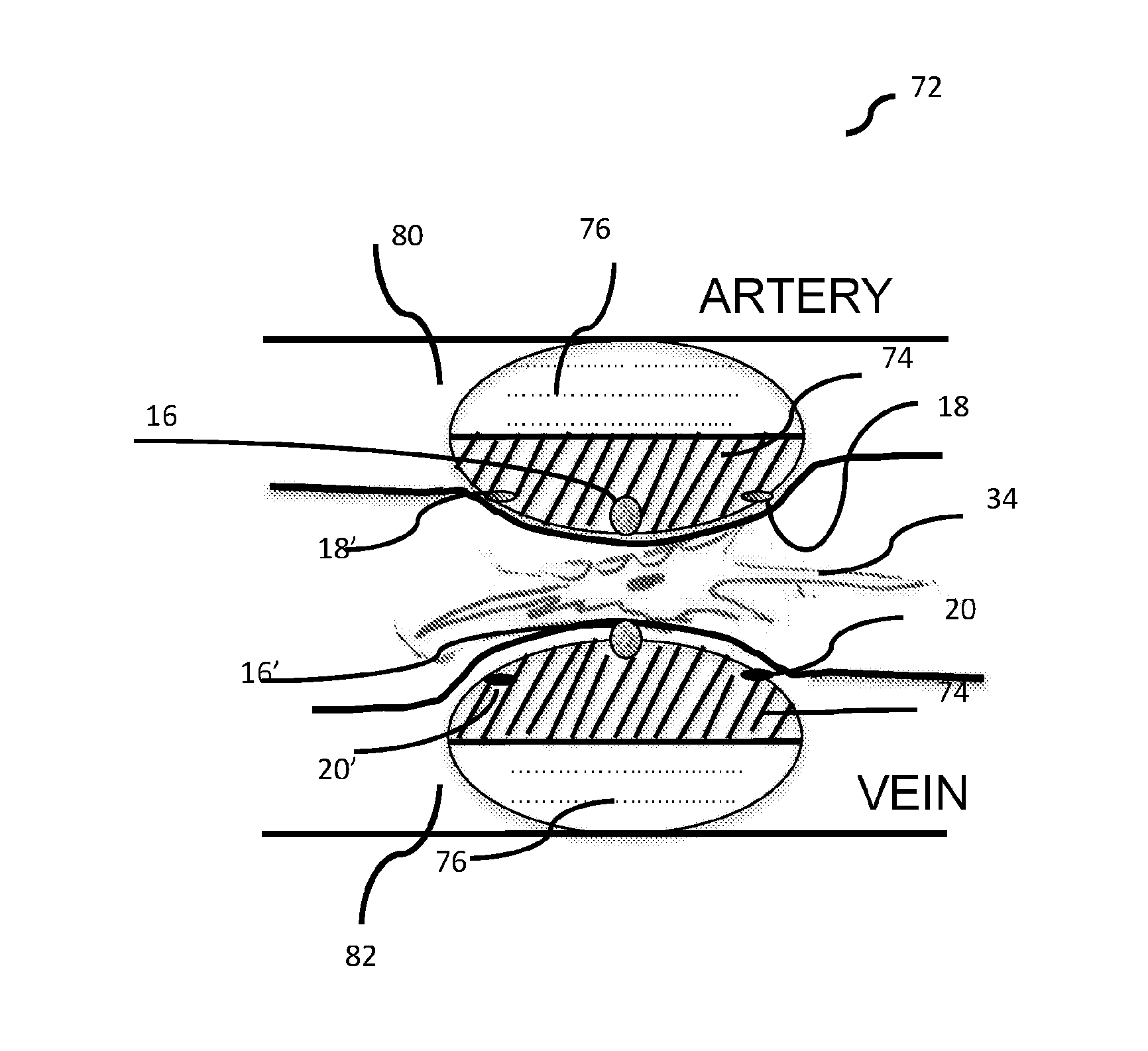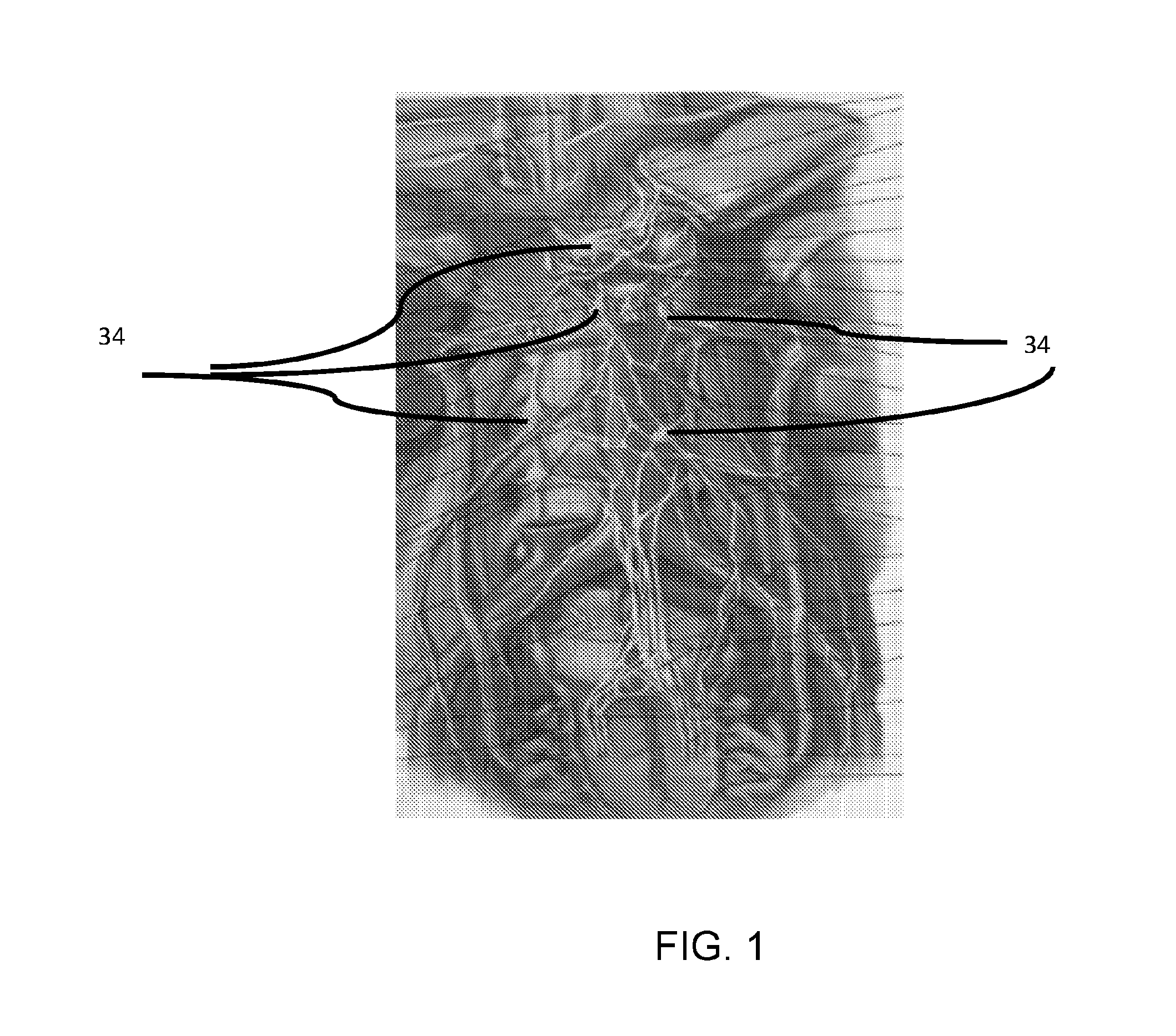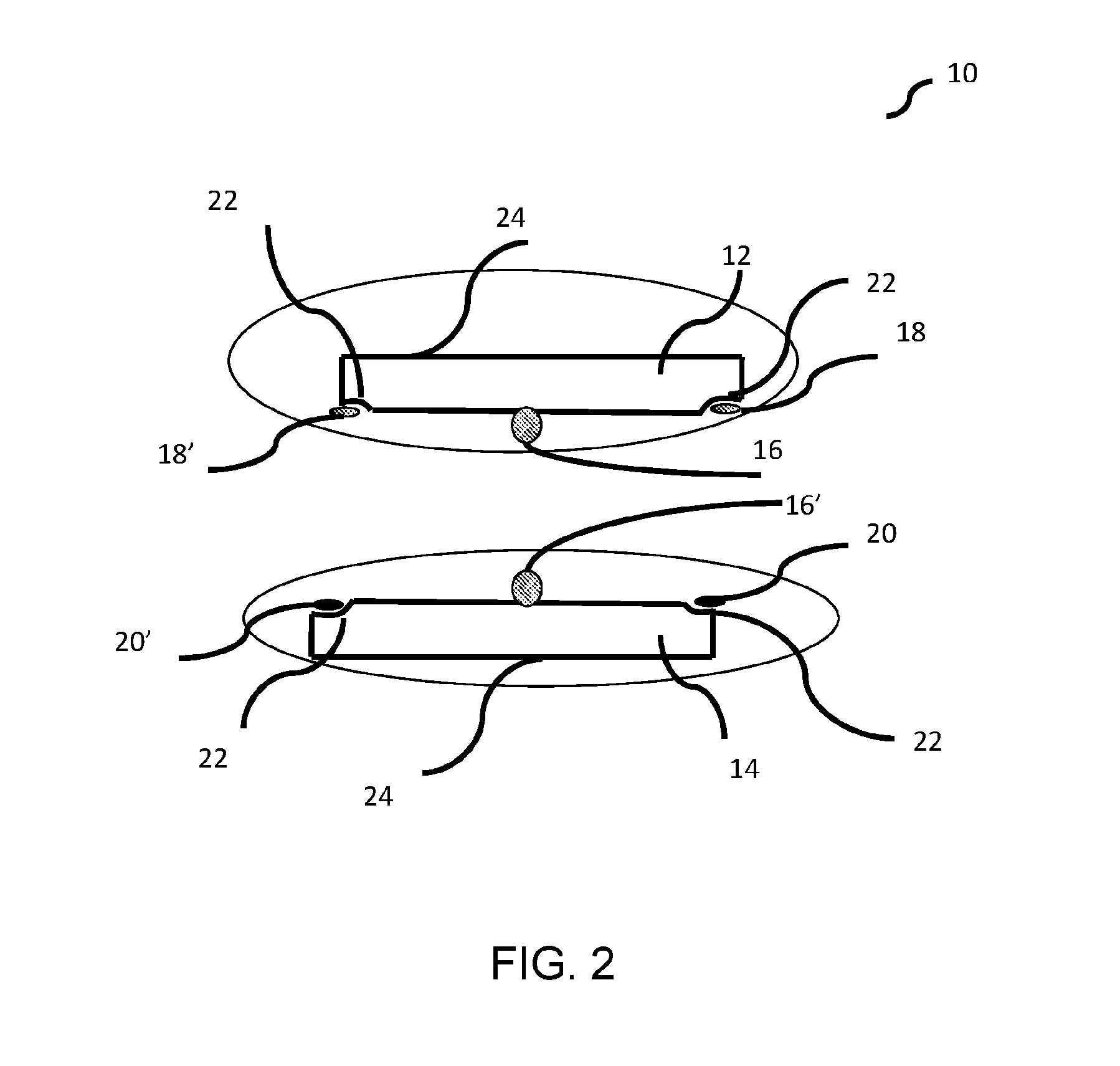Dual catheter ablation system
a catheter and ablation system technology, applied in the field of medical devices, can solve the problems of limiting the effectiveness of this approach, increasing the likelihood of damaging the renal arterial wall, dissection, stenosis or thrombosis, etc., and achieves the effect of greatly enhancing the likelihood of successful ablation and greatly reducing the distance between the ablation element and the target tissu
- Summary
- Abstract
- Description
- Claims
- Application Information
AI Technical Summary
Benefits of technology
Problems solved by technology
Method used
Image
Examples
Embodiment Construction
[0024]As used herein and in the claims, the singular forms “a,”“an,” and “the” include the plural reference unless the context clearly indicates otherwise.
[0025]With radiofrequency ablation, to overcome the disadvantages of the unipolar approach as described hereinabove, a bipolar approach where there are two catheters across the wall of the target tissue is considered more successful in creating transmural necrosis since an ablation lesion will develop adjacent to both catheter electrodes. In this technique, energy is delivered between two electrodes. This potentially results in a more focused delivery of energy which could also minimize lesion width and collateral tissue injury.
[0026]Unlike unipolar RF where a skin patch functions as an indifferent electrode (and therefore lesion develops adjacent only to the active electrode), here both electrodes function as active electrodes. Hence, lesions due to coagulation necrosis develop adjacent to both electrodes. A bipolar approach with...
PUM
 Login to View More
Login to View More Abstract
Description
Claims
Application Information
 Login to View More
Login to View More - R&D
- Intellectual Property
- Life Sciences
- Materials
- Tech Scout
- Unparalleled Data Quality
- Higher Quality Content
- 60% Fewer Hallucinations
Browse by: Latest US Patents, China's latest patents, Technical Efficacy Thesaurus, Application Domain, Technology Topic, Popular Technical Reports.
© 2025 PatSnap. All rights reserved.Legal|Privacy policy|Modern Slavery Act Transparency Statement|Sitemap|About US| Contact US: help@patsnap.com



